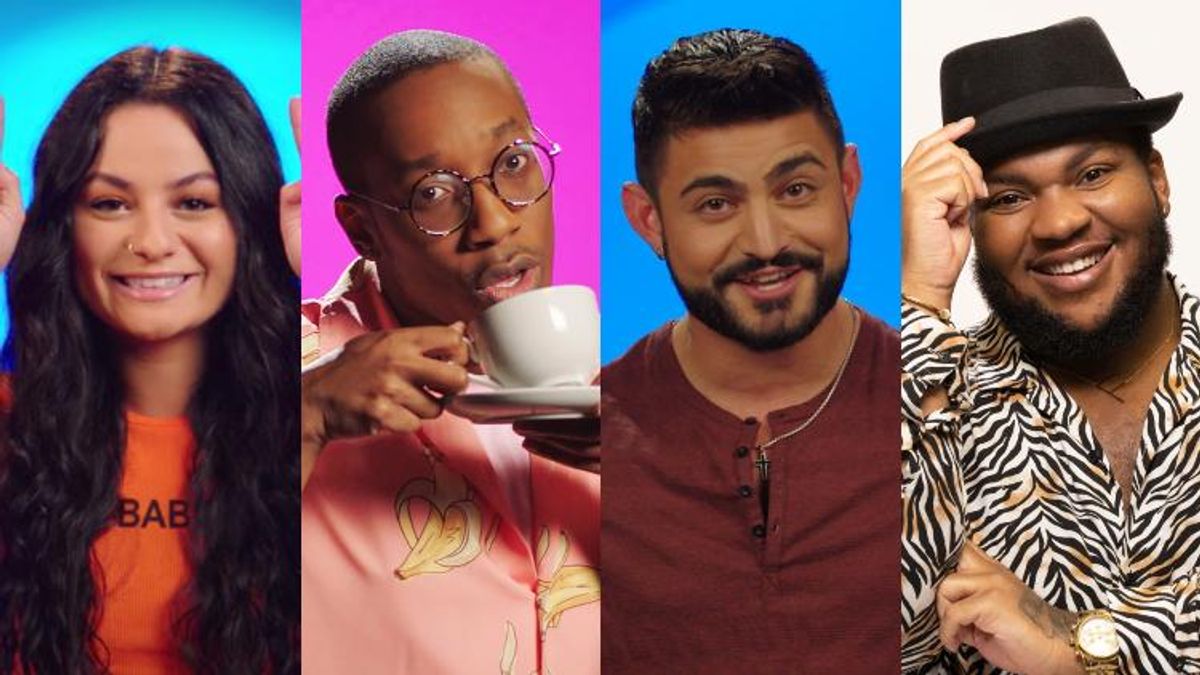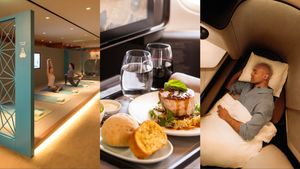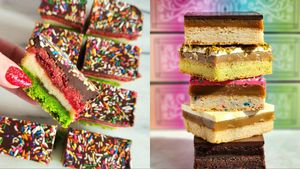It is no secret that Big Brother has had a big problem when it comes to representing minorities on the show.
Throughout the history of the popular CBS reality series, more often than not, all-white, all-straight contestants form dominant alliances that steamroll and go on to eliminate (or weaken) minority players in the competition -- and it's something we need to talk about it more.
The American version of Big Brother premiered on CBS in 2000. After just one season, it became clear that the show's format had to be completely overhauled for U.S. viewers. Instead of relying on votes from the public, Big Brother became a more Survivor-like experience where the contestants themselves voted to eliminate each other.
23 seasons later, the series has only featured two out LGBTQ+ winners (BB15's Andy Herren and BB20's Kaycee Clark) and a single Black winner (BB23's Xavier Prather). Even so, many Big Brother fans have spent years dismissing Herren's gameplay, insisting that Tyler Crispen should have won over Clark, and criticizing the Cookout alliance for helping Prather get to the end.
While some of the show's more dominant alliances did feature people of color and/or LGBTQ+ players, it was clear from the jump that those individuals were at the very bottom of those alliances, and that's something that still needs to be addressed. This was the case for BB6's Ivette Corredero within the Friendship alliance, for BB16's Frankie Grande within the Bomb Squad alliance, for BB20's Christie Murphy and Tommy Bracco within the Gr8ful alliance, and for BB23's Derek Frazier within the Cookout. These players were all either cut early for nonsensical reasons or were taken to the end as "scapegoats."
The very few exceptions to this long-running pattern were the alliances Herren spearheaded in season 15, Vanessa Rousso's leadership role within the Sixth Sense alliance of season 17, and Clark's competitive and social strength within the Level Six alliance of season 20.
We have yet to see an LGBTQ+ player speak up about this extremely problematic pattern on the show, but Da'Vonne Rogers did describe how these biases have affected Black contestants during her legendary final eviction speech on Big Brother 22: All-Stars.
In comes Netflix's American version of The Circle, which drew several comparisons to Big Brother once it premiered. Both of these reality competitions involve strangers socializing, forming alliances, and staying relevant within a "popularity ranking" of sorts.
Unlike Big Brother, though, the first four seasons of The Circle have featured LGBTQ+ players being clearly rewarded for playing as themselves and being outspoken about their identities.
For the past three seasons, at least two LGBTQ+ players (out of five finalists) have made it to the grand finale of The Circle: Chris Sapphire and Sammie Cimarelli in season one, Courtney Revolution and Lee Swift in season two, and Matthew Pappadia and Sophia Layne in season three. All six of those finalists had a legitimate shot at winning the show.
All seasons of The Circle have also included numerous LGBTQ+ cast members, as well as casts featuring at least 50 percent BIPOC players - something that took 23 seasons for Big Brother to start doing. With the fourth season of The Circle premiering this week, we are once again seeing a queer-inclusive and diverse cast. LGBTQ+ contestants Frank Grimsley and Crissa Jackson are also standouts in the first few episodes of season four, so they're probably not getting eliminated anytime soon.
There's no denying that The Circle has put a lot more effort behind casting LGBTQ+ players who aren't considered "caricatures" of what an average viewer would expect from queer people on reality shows. Their stories were fully fleshed-out in the Netflix series beyond their sexual orientations, and they had an equal opportunity to compete against their straight costars and potentially win the show.
Perhaps even more importantly, The Circle also appears to only cast individuals who are open to diversity. Even the straight white men on the show are, for the most part, always willing to build alliances with LGBTQ+ cast members and people of different backgrounds. Many seasons of Big Brother have felt like all-white, all-straight, and mostly male fraternity houses, but that has never really happened on The Circle.
All things considered, Big Brother can really take a cue from Netflix's The Circle when it comes to its casting process. A season is always more interesting when it features cast members who not only have different backgrounds, sexual orientations, and gender identities but also who also introduce new styles of gameplay and new personas to the series. It is also helpful when a reality competition features players who are actually open to socializing and forming alliances with people they might've otherwise never met in their lives.
For a show that hails itself as a "social experiment," Big Brother has been basically telling the same story - over and over again - of the straight white man who wins at the end by aligning himself with his "bros" and taking out minorities. The series could keep reinforcing those white and straight privileges over the years...or it can take a chance on cast members with fresh and more interesting storylines that we've gotten to meet on The Circle.
The Circle season four is now streaming on Netflix.
RELATED | RuPaul's Drag Race Announced Another New Version--Here's All the 2022 Editions
























































































